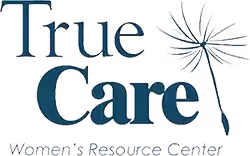Opioid addiction is considered a crisis in the United States, with overdoses increasing annually. The number of women hospitalized because of opioid use between 2005 and 2014 was higher than among men, and between 1999 and 2017 the death rate from drug overdose among women ages 30 to 64 increased by 260 percent.
Opioids and Women
Opioids include prescription drugs, such as oxycodone and hydrocodone, and illegal drugs, like heroin. The purpose of the legally prescribed drugs is to manage pain. A recently released federal report found four alarming results from a study conducted between 1999 and 2015:
- The death rate from prescription opioid overdoses increased 471 percent among women (compared to an increase of 218 percent among men).
- Heroin deaths among women increased more than two times the rate among men.
- Synthetic opioid-related deaths among women increased 850 percent.
- Women seem to progress more quickly to opioid addiction than men.
The report goes on to cite information provided by the Centers for Disease Control as to why women are becoming increasingly addicted and therefore dying from opioids. Those thoughts include “women are more likely than men to experience chronic pain and use prescription opioid pain medications for longer periods and in higher doses” and “psychological and emotional distress have been identified as risk factors for hazardous prescription opioid use among women but not among men.”
Opioids Affect Newborns and Children
In a recent press release, the National Institutes of Health shared an article published in the American Journal of Obstetrics and Gynecology. Medical researchers stressed “that women and children bear a substantial burden of the U.S. opioid epidemic” and that “opioid exposure during pregnancy is known to cause neonatal opioid withdrawal syndrome, or neonatal abstinence syndrome…. These infants are also at higher risk of developing behavioral and educational problems later in life.”
A Boston study that took place during 20+ years involved more than 8,500 mothers and their newborns. More than 450 of those babies had been exposed to opioids while their moms were pregnant. The study showed that such exposure had long-term, negative effects on the physical and mental development of the children. The study also showed women on opioids experienced a greater risk of preterm delivery and had smaller babies with lower birth weights.
Newborns exposed to opioids during the mother’s pregnancy develop a dependence on the drug in the womb and experience withdrawals after birth. This is known as neonatal abstinence syndrome (NAS). The baby experiences symptoms, such as tremors, seizures, nausea, and irritability, for between two days and two weeks. Therefore, if a woman is pregnant and addicted to opioids or other drugs, the baby in her womb is impacted by the drugs.
Seek Help
If you or someone you know is addicted to opioids, seek help immediately, whether or not you’re pregnant. Such medications may be used as a coping mechanism, emotionally or physically, but being in control of your life is a far better way to experience life than through addiction to a drug. Life can be challenging, but with help there is hope, and you can find the assistance you need right here in our community. Oftentimes, Medicaid covers the cost of treatment.
If you are experiencing an unplanned pregnancy and are struggling with opioids or other drugs, True Care is here to help you. Not only do we provide free, confidential pregnancy testing and related medical services, but we have a resource coordinator on staff who can help you find treatment in Casper. Call or text our Scheduling Line to make your appointment: 307-215-9684.
Additional Resources:
https://www.acog.org/Patients/FAQs/Opioid-Use-Disorder-and-Pregnancy?IsMobileSet=false
https://nashp.org/wp-content/uploads/2018/10/NOSLO-Opioids-and-Women-Final.pdf
https://www.rehabspot.com/opioids/who-addiction-affects/women/
https://jamanetwork.com/journals/jamanetworkopen/fullarticle/2736935?resultClick=24
https://www.hcup-us.ahrq.gov/reports/statbriefs/sb224-Patient-Characteristics-Opioid-Hospital-Stays-ED-Visits-by-State.pdf
